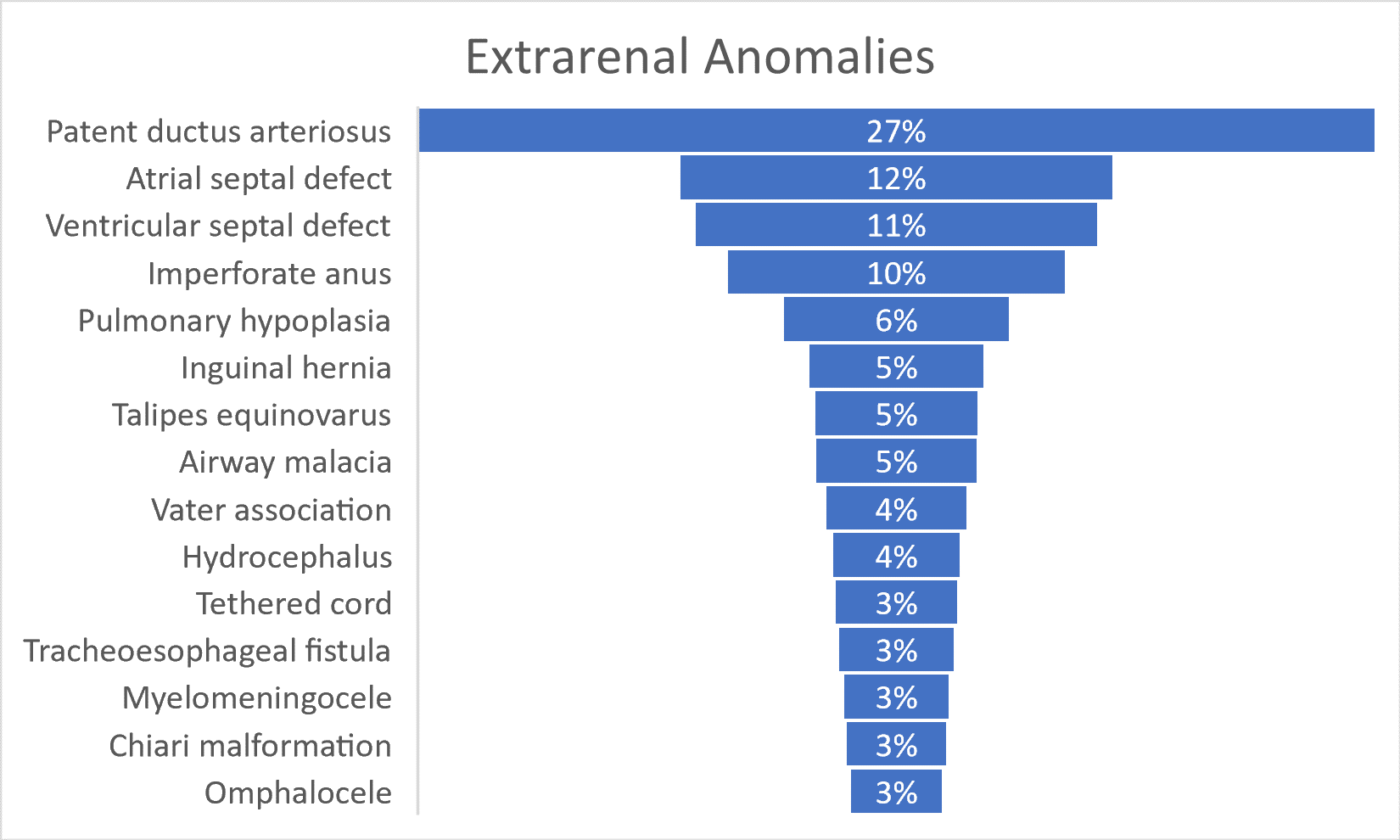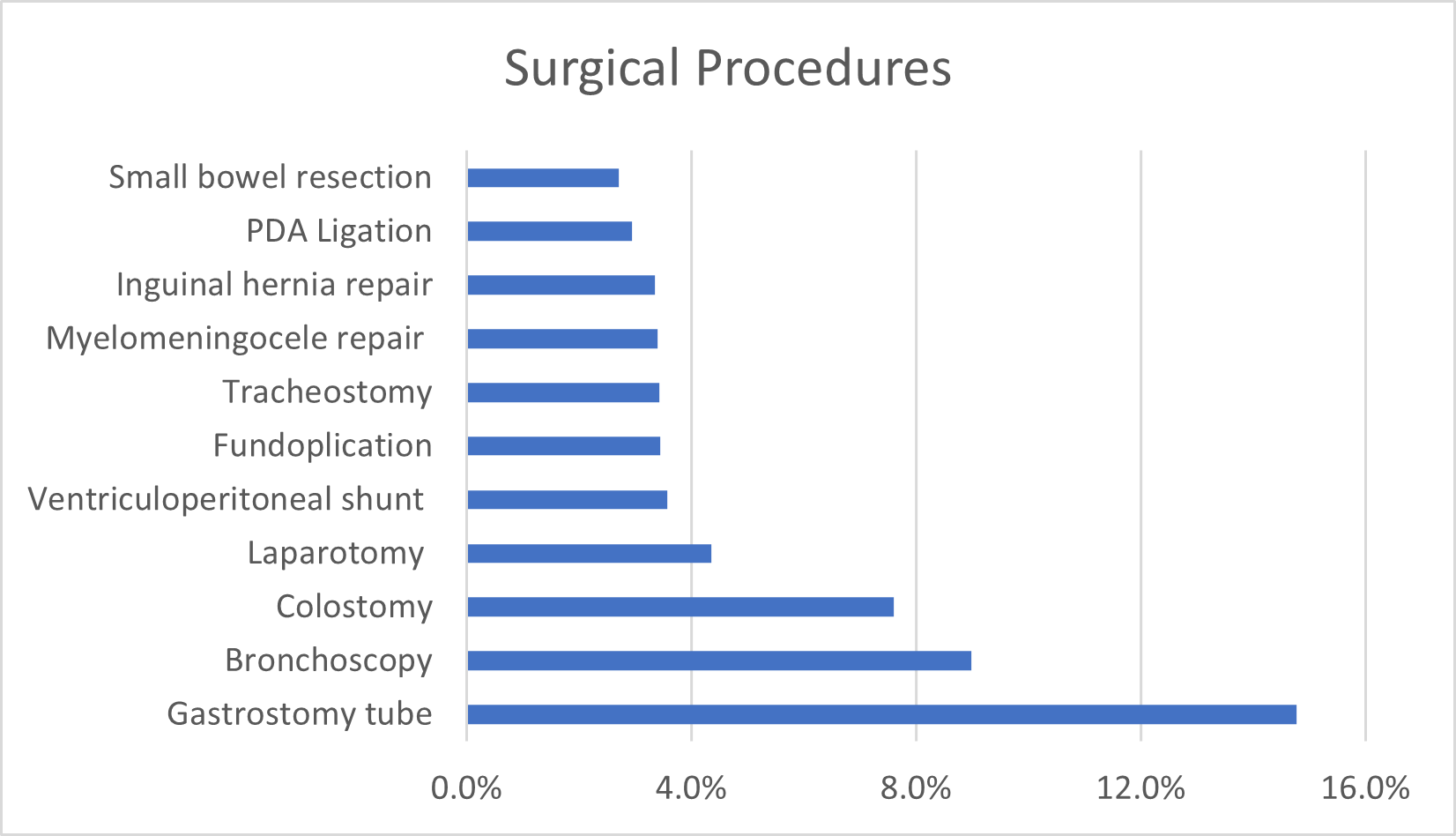Neonatal Nephrology/AKI
Neonatal Nephrology/AKI 2
244 - Extrarenal Birth Defects and Surgical Interventions in Neonates with Congenital Anomalies of the Kidney and Urinary tract (CAKUT)
Publication Number: 244.243

Sofia I. Perazzo, MD (she/her/hers)
Program Lead
Childrens National Hospitla
Childrens National Health System
Washington, District of Columbia, United States
Presenting Author(s)
Background:
Congenital anomalies of the kidney and urinary tract (CAKUT) are common with an estimated prevalence of 1.6-4 per 1000 births, comprising 20-30% of all fetal anomalies. There is limited data describing the extrarenal congenital anomalies and surgical procedures performed in neonates with CAKUT.
Objective: Describe extrarenal congenital anomalies and surgical interventions in neonates with CAKUT admitted to level IV NICUs in the Children’s Hospital Neonatal Consortium (CHNC) database from 2010 to 2021.
Design/Methods: In this retrospective cohort from 39 level IV NICUs in the CHNC database, neonates with CAKUT were included and associated anomalies and surgical procedures were evaluated. CAKUT anomalies included were: congenital hydronephrosis or hydroureter, congenital urinary tract obstruction due to posterior urethral valve, renal agenesis uni or bilateral, polycystic-dysplastic kidney, uni and bilateral, horseshoe-pelvic kidney, duplicated urinary system, vesicoureteral reflux grade I to V, exstrophy of the bladder, ureteropelvic junction obstruction, prune belly syndrome, cloacal exstrophy, ureterovesico junction obstruction, agenesis of distal urinary system bladder/urethral and urethral stenosis-stricture. Only the first episode of care or admission was included and only completed records were used. In this first approached we look at total cases and proportions of different diagnosis and surgeries.
Results:
A total of 248,592 episodes of care were analyzed. 651 records were excluded due to data quality. 5% (12,256) cases had one or more of the diagnostic criteria for CAKUT. 97.3% (11,921) correspond to first admission and 3 % (335) correspond to readmission to the level IV NICU.
The most common CAKUT abnormality was congenital hydronephrosis/hydroureter which represented 62% (6,925) of the encounters, posterior urethral valve obstruction (8%), bilateral polycystic/dysplastic kidney (8%), unilateral renal agenesia (7%) and unilateral polycystic/dysplastic kidney (7%) (Figure 1).
Extrarenal birth defects present outside the GU system were patent ductus arteriosus (27%), arterial septal defect (12%), ventricular septal defect (11%), and imperforate anus (10%) (Figure 2).
The most common surgical procedures included gastrostomy tube placement (15%) and bronchoscopy (9%) (Figure 3). Cystoscopy (8.0%) and resection of posterior urethral valves (6.5%.) were the most common surgeries within the GU tract
Conclusion(s): In this cohort, extrarenal birth defects were common with cardiac as the most frequent extrarenal system affected..png)


